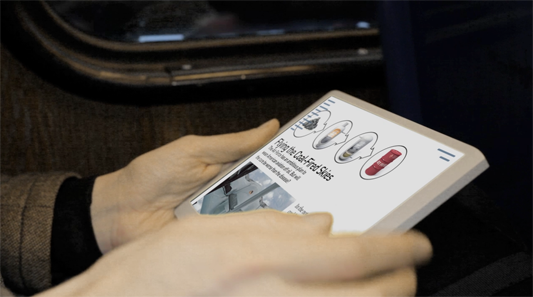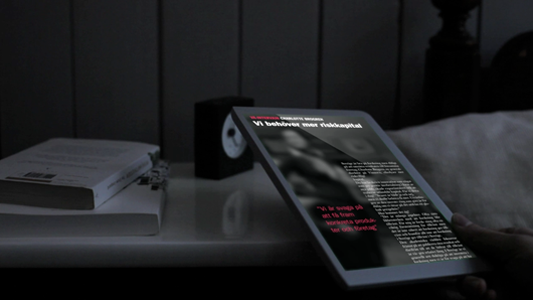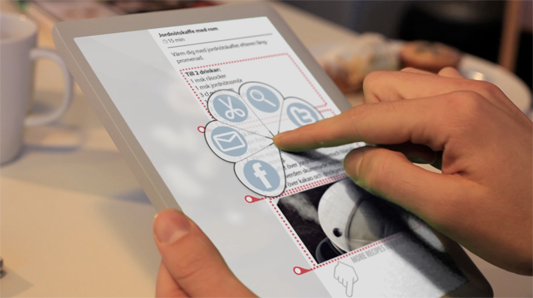I’ve got something I want to share with you.
We’ve been working with our friends at Bonnier R&D exploring the future of digital magazines. Bonnier publish Popular Science and many other titles.
Magazines have articles you can curl up with and lose yourself in, and luscious photography that draws the eye. And they’re so easy and enjoyable to read. Can we marry what’s best about magazines with the always connected, portable tablet e-readers sure to arrive in 2010?
This video prototype shows the take of the Mag+ project.
You can see this same video bigger on Vimeo.
The articles run in scrolls, not pages, and are placed side-to-side in kind of mountain range (as we call it internally). Magazines still arrive in issues: people like the sense of completion at the end of each.

You flip through by shifting focus. Tap the pictures on the left of the screen to flip through the mag, tap text on the right to dive in.

It is, we hope, like stepping into a space for quiet reading. It’s pleasant to have an uncluttered space. Let the Web be the Web. But you can heat up the words and pics to share, comment, and to dig into supplementary material.

The design has an eye to how paper magazines can re-use their editorial work without having to drastically change their workflow or add new teams. Maybe if the form is clear enough then every mag, no matter how niche, can look gorgeous, be super easy to understand, and have a great reading experience. We hope so. That gets tested in the next stage, and rolled into everything learned from this, and feedback from the world at large! Join the discussion at the Bonnier R&D Beta Lab.
Recently there have been digital magazine prototypes by Sports Illustrated, and by Wired. It’s fascinating to see the best features of all of these.
Many teams at Bonnier have been involved in Mag+. This is a synthesis of so much work, research, and ideas. But I want to say in particular it’s a pleasure to collaborate with our friends at R&D. And here at BERG let me call out some specific credits: Jack Schulze, Matt Jones, Campbell Orme and Timo Arnall. Thanks all!

(See also Bonnier R&D’s Mag+ page, where you can leave comments and contact Bonnier, and the thoughts of Kicker Studio — who will be expanding the concept to robust prototype over the next few months in San Francisco! BERG’s attention has now moved to the social and wider services around Mag+ – we’ll be mapping those out and concepting – and we’re looking forward to working with all the teams into 2010. Awesome.)